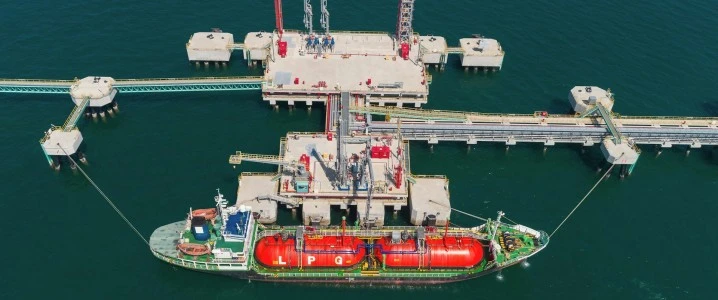Exxon, Chevron move to dominate Permian as smaller players pull back
The Big Oil companies Exxon Mobil and Chevron are keeping their promises to dominate the Permian Basin, rapidly ramping up production as smaller companies contend with declining drilling activity, muted oil prices and a skeptical Wall Street unwilling to finance their growth.
Exxon Mobil has, by far, become the Permian’s most active driller with more than 50 rigs operating in the West Texas oil field, increasing production there by nearly 90 percent in 12 months. Chevron, along with Occidental Petroleum of Houston, is one of just two companies producing more than 420,000 barrels of oil equivalent per day from the region, the companies said Friday in their quarterly earnings reports.
The Permian, now the world’s most productive oil and gas basin, is producing about 4.2 million barrels of crude oil a day, more than one-third of the nation’s record output of more than 12 million barrels a day. The basin, by far the central focus of the shale boom, also is the country’s second-most prolific natural gas producer.
Small and midsize oil firms led the so-called shale revolution, proving horizontal drilling and hydraulic fracturing techniques. Exxon and Chevron — and energy majors generally — came to shale slowly, but now they are using their deep pockets, size and diversified income to continue to invest in drilling projects in the Permian and drive growth there. To a lesser extent, the European energy majors Royal Dutch Shell and BP also are focusing on Permian growth.
Earlier this year, Exxon and Chevron both pledged to churn out close to 1 million barrels of oil equivalent a day from the Permian by 2024.
“We’re making outstanding progress. Permian production is strong and on schedule,” Exxon Mobil Senior Vice President Neil Chapman said Friday. “It’s a manufacturing approach. We’re doing it at scale. A lot of the smaller players don’t have the opportunity to do that. And we’re doing it through the cycles.”
The so-called manufacturing mode means drilling many more wells — with longer horizontal depths — from single locations while using repeatable methods to save time and money.
Exxon has the acreage to eventually drill 6,500 Permian wells, Chapman said. So far, they’ve brought only about 100 new wells online.
Quarterly earnings
Exxon Mobil, headquartered in Irving, said its profits fell more than 20 percent in the second quarter to $3.1 billion from about $4 billion in the previous year, blaming low natural gas prices and smaller petrochemical profit margins. Exxon’s petrochemical profits were the worst in 11 years because of a global glut in chemicals and plastics supplies.
Chevron, of San Ramon, Calif., said its second-quarter profit jumped 25 percent to $4.3 billion, largely because of the $1 billion termination fee paid when Anadarko Petroleum nixed its merger agreement and agreed to be acquired by Occidental Petroleum.
Chevron’s petrochemical business was also hit by shrinking profit margins. But both energy giants said they view the slowdown in petrochemicals as temporary.
Energy analysts said Chevron is outperforming Exxon Mobil, but to its credit, analysts added, Exxon Mobil finally turned around years of oil and gas production declines and is now firmly on the upswing.
“Exxon’s drilling push in the Permian is only about two years old,” said Pavel Molchanov, an analyst with the financial services company Raymond James. “This quarter was one of the rare cases where Exxon’s production growth was better than Chevron’s. It’s consistently been the opposite for years.”
Both Exxon and Chevron are continuing to invest in petrochemical and refining expansion along the Texas Gulf Coast, undertaking big projects in the Houston, Corpus Christi and Beaumont areas. These expansions are fueled by the ample supplies of crude oil and natural gas liquids — much of it coming from the Permian Basin — that are used to make petrochemicals and fuels.
Jennifer Rowland, an energy analyst at the financial services company Edward Jones, said it all adds up to boost local economies — even when oil prices aren’t as strong.
“There’s a lot of activity and investment, and it’s not going to go away any time soon,” Rowland said.
Looking ahead
Both Exxon Mobil and Chevron Phillips — Chevron’s chemicals joint venture with the Houston refiner Phillips 66 — recently completed huge petrochemical expansions near Houston. They’re now planning more Houston expansions in Baytown and beyond.
Exxon is about to build a huge chemicals and plastics complex with a Saudi Arabian company near Corpus Christi, and Chevron Phillips just partnered with Qatar’s national oil company for a project somewhere along the Gulf Coast. They haven’t announced a site yet.
Chevron just bought a Pasadena refinery outside of Houston, and Exxon Mobil has launched big expansions at its Beaumont refinery.
An explosion and fire at Exxon Mobil’s Baytown complex earlier this week injured 37 people. It was the second major Baytown fire for Exxon in recent months.
“We must eliminate the significant one-off events,” Chapman told investors and analysts.
In the Gulf of Mexico, Chevron recently brought its long-delayed Big Foot platform online. It expects to approve more Gulf projects in 2020. Exxon Mobil, meanwhile, is looking to sell assets in the Gulf of Mexico, while it focuses more on offshore growth in Guyana and Brazil.
Exxon Mobil’s stock fell about 1 percent to $71.46 per share. Chevron’s stock fell 5 cents a share to close at $120.69.
Related Links: Exxon Mobil, Chevron
Source: Houston Chronicle
Published: 03-08-2019














